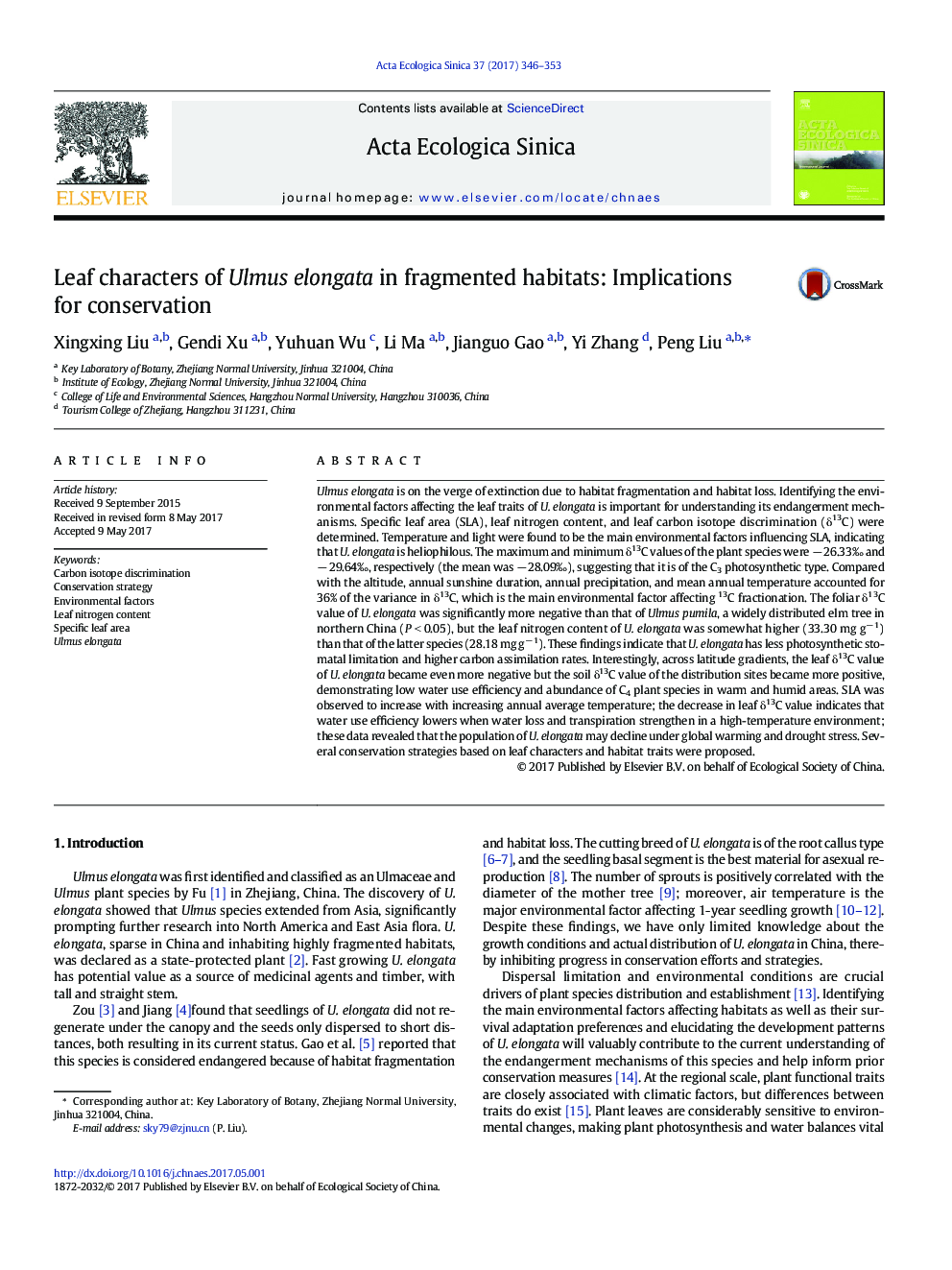| کد مقاله | کد نشریه | سال انتشار | مقاله انگلیسی | نسخه تمام متن |
|---|---|---|---|---|
| 8846356 | 1617672 | 2017 | 8 صفحه PDF | دانلود رایگان |
عنوان انگلیسی مقاله ISI
Leaf characters of Ulmus elongata in fragmented habitats: Implications for conservation
دانلود مقاله + سفارش ترجمه
دانلود مقاله ISI انگلیسی
رایگان برای ایرانیان
کلمات کلیدی
موضوعات مرتبط
علوم زیستی و بیوفناوری
علوم کشاورزی و بیولوژیک
بوم شناسی، تکامل، رفتار و سامانه شناسی
پیش نمایش صفحه اول مقاله

چکیده انگلیسی
Ulmus elongata is on the verge of extinction due to habitat fragmentation and habitat loss. Identifying the environmental factors affecting the leaf traits of U. elongata is important for understanding its endangerment mechanisms. Specific leaf area (SLA), leaf nitrogen content, and leaf carbon isotope discrimination (δ13C) were determined. Temperature and light were found to be the main environmental factors influencing SLA, indicating that U. elongata is heliophilous. The maximum and minimum δ13C values of the plant species were â 26.33â° and â 29.64â°, respectively (the mean was â 28.09â°), suggesting that it is of the C3 photosynthetic type. Compared with the altitude, annual sunshine duration, annual precipitation, and mean annual temperature accounted for 36% of the variance in δ13C, which is the main environmental factor affecting 13C fractionation. The foliar δ13C value of U. elongata was significantly more negative than that of Ulmus pumila, a widely distributed elm tree in northern China (P < 0.05), but the leaf nitrogen content of U. elongata was somewhat higher (33.30 mg gâ 1) than that of the latter species (28.18 mg gâ 1). These findings indicate that U. elongata has less photosynthetic stomatal limitation and higher carbon assimilation rates. Interestingly, across latitude gradients, the leaf δ13C value of U. elongata became even more negative but the soil δ13C value of the distribution sites became more positive, demonstrating low water use efficiency and abundance of C4 plant species in warm and humid areas. SLA was observed to increase with increasing annual average temperature; the decrease in leaf δ13C value indicates that water use efficiency lowers when water loss and transpiration strengthen in a high-temperature environment; these data revealed that the population of U. elongata may decline under global warming and drought stress. Several conservation strategies based on leaf characters and habitat traits were proposed.
ناشر
Database: Elsevier - ScienceDirect (ساینس دایرکت)
Journal: Acta Ecologica Sinica - Volume 37, Issue 5, October 2017, Pages 346-353
Journal: Acta Ecologica Sinica - Volume 37, Issue 5, October 2017, Pages 346-353
نویسندگان
Xingxing Liu, Gendi Xu, Yuhuan Wu, Li Ma, Jianguo Gao, Yi Zhang, Peng Liu,